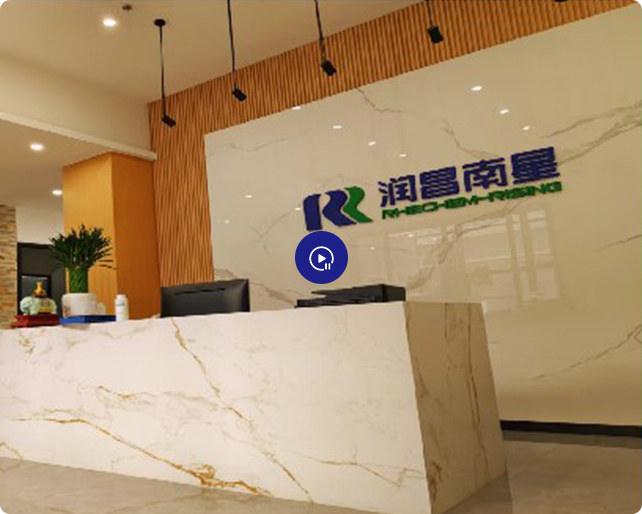
Our solvent-based acrylic polyol resin is a member of the acrylic resin family, featuring molecular structures that contain reactive hydroxyl groups (-OH). These hydroxyl groups play a key role in determining the resin’s performance and compatibility with other coating components.
The resin is synthesized through the polymerization of acrylic or methacrylic monomers, with hydroxyl-containing monomers such as hydroxyethyl acrylate (HEA) or hydroxypropyl methacrylate (HPMA) incorporated into the polymer chain. The resulting polymer has pendant hydroxyl groups that provide controlled reactivity, making it suitable for 2-pack polyurethane coatings used in automotive, industrial, and protective applications.
nCH2=CHCOOCH2CH2OHInitiator[−CH2−CH(COOCH2CH2OH)−]n
- High Reactivity with Isocyanates – Hydroxyl groups in the resin react with isocyanate curing agents to form urethane linkages, creating a three-dimensional network that enhances hardness, scratch resistance, and chemical resistance in 2-pack coatings.
- Curing Flexibility – Can also be crosslinked with amino resins, such as melamine formaldehyde, at elevated temperatures (120–180°C) for industrial applications, providing high hardness and durable coatings.
- Gloss and Levelling – Produces smooth, high-gloss films due to good flow and leveling properties, covering surface imperfections for a uniform finish.
- Balanced Hardness and Flexibility – Crosslinked coatings resist scratching and abrasion while retaining flexibility to accommodate substrate expansion and contraction.
- Chemical Resistance – Coatings form a barrier against acids, alkalis, and common solvents, protecting substrates in industrial and chemical environments.
- Weather Resistance – Resistant to UV radiation, moisture, and temperature changes, maintaining appearance and protective performance for outdoor applications.
| Parameter |
Typical Value |
Unit |
Notes |
| Appearance |
Clear to pale yellow liquid |
– |
Visual inspection |
| Solid Content |
30–60 |
% |
Can be adjusted for formulation |
| Viscosity (25°C, Brookfield RV) |
5000–250000 |
mPa·s |
Spindle 3, 20 rpm |
| Hydroxyl Value |
60–200 |
mg KOH/g |
Determines reactivity with isocyanates |
| Acid Value |
≤10 |
mg KOH/g |
Low acidity for stability |
| Density (25°C) |
1.05–1.15 |
g/cm³ |
Typical value |
| Glass Transition Temperature (Tg) |
15–85 |
°C |
Affects hardness and flexibility |
| Recommended Solvents |
Xylene, Ethyl Acetate, Butyl Acetate |
– |
For formulation compatibility |
| Curing Method |
With isocyanates or amino resins |
– |
2-pack polyurethane or industrial coatings |
| Shelf Life |
12 |
months |
Stored in sealed containers at 5–35°C |
| Storage |
Cool, dry place |
– |
Avoid direct sunlight and moisture |
Our Solvent Based Polyol Hydroxyl Acrylic Resin is suitable for a wide range of coating applications across automotive, industrial, and plastic substrates.
1. Automotive Coatings
- Primer Coatings – Provides strong adhesion to metal surfaces, ensuring long-term durability of the coating system. Its good flow and leveling properties create a smooth base for subsequent topcoat layers. Low VOC formulations meet environmental standards while offering high corrosion resistance.
- Topcoat and Clearcoat – Ideal for color and protective layers. Ensures uniform pigment dispersion, high gloss, and scratch resistance. Clearcoats form hard, transparent films that protect against UV damage and environmental contaminants, enhancing the vehicle’s finish and value.
2. Industrial Coatings
- Machinery and Equipment – Protects metal surfaces against abrasion, mechanical stress, and industrial chemicals. Suitable for conveyor belts, gears, and machine tools. Can be applied on-site with room temperature curing or forced drying.
- Metal Furniture – Provides durable protection for indoor and outdoor furniture. Resists scratches, stains, fading, UV radiation, and moisture while offering a wide range of finishes from high-gloss to matte.
3. Plastic Substrate Coatings
- Adhesion to Plastics – Special formulations allow strong adhesion to plastics such as PP, PE, and ABS. Achieved through mechanical interlocking and chemical bonding, sometimes enhanced with primers or functional additives.
- Improving Surface Properties – Enhances scratch resistance, hardness, and chemical resistance. Can also improve aesthetics, providing high-gloss finishes or color customization. Suitable for plastic automotive parts, consumer electronics housings, and toys.
- Strong Adhesion & Durability – Ensures coatings remain intact under mechanical stress, temperature changes, and environmental exposure.
- High Gloss & Surface Quality – Produces smooth, uniform films with excellent leveling and color retention.
- Chemical & Weather Resistance – Protects substrates from solvents, acids, alkalis, UV, and moisture.
- Flexible Formulation – Compatible with various crosslinkers, pigments, and additives for customized performance.
- Cost-Effective & Environmentally Considerate – Long-lasting coatings reduce maintenance and recoating needs, while VOC levels can be minimized for eco-friendly applications.
- Versatile Application Methods – Suitable for spraying, brushing, or rolling, adapting to different production and maintenance conditions.







 Network Supported
Network Supported

